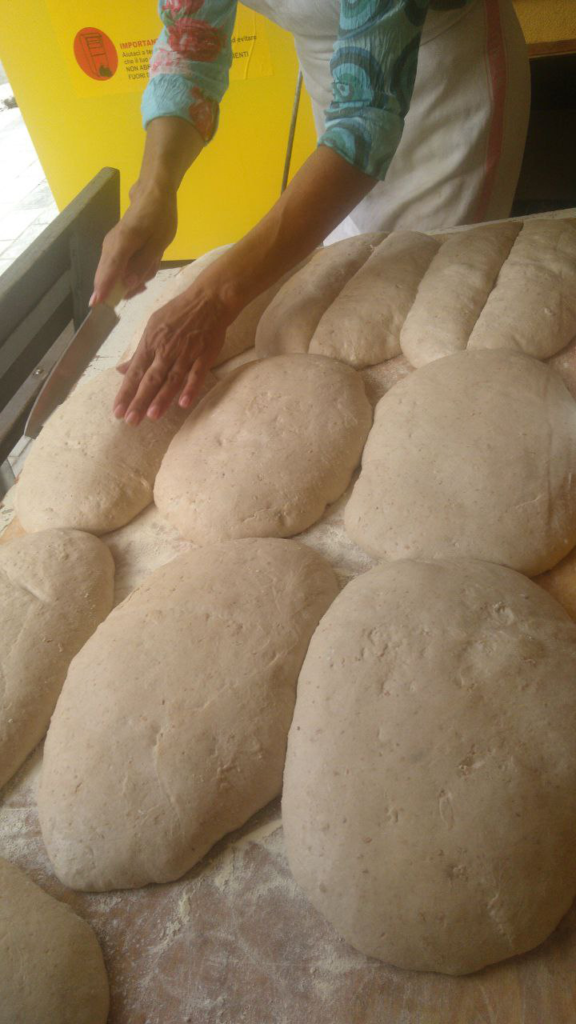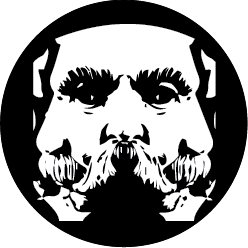Art is Bread and Bread is Art, thank you Cosio!
“Art is Bread and Bread is Art, thank you Cosio!”
Matteo Naaldberg (Kiel) held an interview for Radio Antidoto in Cosio d’ Arroscio, September last year. He spoke with composer Hansko Visser, just when Trasformatorio stroke their tents… Exactly one year later, Trasformorio present their way of working at L ‘Ortiche, in Genova, on the second of October… A good reason to call Hansko again:
I. “in presentia”
“I feel I’m privileged, that is how I would answer that question today’…
The charming author smiles as we meet him, a crisp Indian summer morning, in front of the
local bar annex grocery store of the just as charming Cosio d’ Arroscia and ask him how he feels. A late, but still slightly foaming cappuccino seems to mildly stress his words.
“Of course – after a slight hesitation, that sends a tiny, though greyish cloud over his face and over our sunny morning -, “of course”, he recaptures: “there have been times that I literally struggled for that crumb of recognition, if even only financial, for my work as a composer and writer in the Semi-Northern parts of Europe. Now, however, the reception of enormous international acclaim, the warm embrace of understanding of so many people that are really important in this -my- world, has chased away the proverbial chill of Dutch Misery, so I can answer you honestly and with a smile.”

Clearly, not a man of verbal economizations, this Hansko Visser, born more than fifty years ago in the Netherlands in a small eastern village on the corner of St. Petersburg Street. The more striking his lavish vocabulary seems when you look at and listen his work, both as a musician and a writer (and one might even include his visual art). It shows an almost merciless strictness of words and images. And here, he never, ever explains anything.
“Hmm.. I plead guilty to that”, he almost blushes, admitting that ” yes, i do love to talk freely and a lot, because in my work I have to be very concise: I have to be sure about what I say and even
more about how it sounds, to not lose time, energy or meaning. So I hope you ‘ll excuse my blabbering and don t take me too serious when I talk about myself”
Somewhat later, when he mentions the things that touch his heart: economics and inequality, politics and refugees, climate and neoliberal capitalism, and apparently most of all mediocracies in art and education, we witness how the up to now prevalent mildness in tone and expression all of a sudden disappears. And we even begin to understand the seemingly inconspicuous, but somehow almost threatening remark he added to his professional linked-in profile, stating that he followed (“up to now succesfully..” ) an aggression- control course.
What s all that about, Hansko? You, a composer of so silent chamber music, tiny radio-operas, classical string quartets, a known admirer of Bach and Ustvolskaya, in ultimate control in words and strict in intervals, scarce in major thirds and soft in colors- suddenly so strongly flaring up in anger over the immorality and stupidity of “our system”? You ‘re not a communist, are you?
“Please, don t get me started!”
He leans across the little table towards us, takes a deep breath, then pauses, and breaths out, …. would you fancy another coffee? Listen, I studied Russian literature and Eastern Europe history when I was younger, so I couldn’t possibly be a communist….
Anarchism, however interests me as I strongly believe in thinking critically and taking responsibility yourself for whatever you do, in whatever you do, be it writing or playing music.
I m reading Kropotkin again and I recognize how things come back in the way Trasformatorio, the organization that invited me here, works. And I can tell you it works.
“But let s not go there, now. Better to talk about how these matters appear “transcended ” in our work, where we try to process these thoughts, to keep them alive. It is through what we make, that we comment on the reality, that we are part of, and that I feel a certain responsibility towards .
I feel part of a chain of people working in that field of art, be it older examples like Stravinsky or Scelsi, be it the lady that bakes our bread in the big ProLoco’s outside oven. Art is not a luxury that can be payed off by power: it is a motor that should criticize and steer the critical thinking towards power. Any powers that be.
It ‘s sad to see how many artists have become people that wait for money to trickle down from above, before start working from an inner need. (and criticizing the powers that pay their flying tickets only when these powers think it is safe to allow them to…)”
“But, yes, i am a privileged person. My pieces are being played, I play with people of my generation and of the ones before and after. The youngest of them, being only ten years old, from Cosio, who drew the design for our upcoming record sleeve!
A drummer from Sicily of 26, a poet from Surinam of 92! And of course Bas, with whom I have been playing for thirty two years now and who helped collecting the material for our Colors of Cosio Sinfonietta in this village. I’ m really happy about that.
And my book of poems and drawings got some great reviews from the people that bought it,
Isn ‘t that what really counts? You want Milk…?”
He just started off on a passionate plea for individual and independent schooling; about the importance of good teachers, about ethics not being cut loose from aesthetics…until the elder lady of the bar for the third time wants to bring us free drinks and food…
We kindly refuse this time…
“You see” , he says: “this here, is the village of Piero Simondo and his first Situationist friends. One of them, Pinot-Gallizio, made paintings with these people, sold art by the meter on the local markets. And may well be that even Jan Yoors once slept here, while passing by with his gypsy family. And look at us now: we may work here, with great dancers and drawers, with writers and singers, local and from the city’s, from here and from abroad!
The people are so kind to us”.
Hansko has to leave for a repetition with the local choir. He thanks us for our interview and waves, bowing as we leave the little village behind : “Don t forget to look to your right,
when you pass the rusty corner, at the band of the road between the graveyard and the playground,” he winks when we leave.
(And yes, we know now, what he meant! But we will not explain that to you, as we promised.
Come and find out, yourselves. You’ll love Cosio. We did.)
(M.N. 4 October 2021)
II. “in absentia”
Back in Germany, in a second conversation I had with Hansko Visser, this time by telephone, we were able to ask some more questions about what Trasformatorio did during their stay in Cosio, and what he remembered best.

MN: So, you are back and live in Germany now? Shouldn’t you be in Genova, presenting Trasformatorio in the Ortiche?
HV: Yes, I am in Bonn, working! I won ‘t travel down, also for climate-change reasons, but I trust the others will do fine without me and Bas. I ‘m right now finishing my submission for the Genova Convention!
MN: Could you be a bit more precise about the people you mentioned in our first conversation, the ones you mentioned before we left?
HV: I” m glad to do so, and it really coincides with the questions Vanessa Ings asked us, when we were putting together the material for her booklet about our stay in Cosio:
Jan Yoors, an Antwerp born artist spent many years living together with his Roma family and was their liaison with resistance during World War II. His books and beautiful tapestry have been a constant inspiration for me and served as a guide -ethically and esthetically- for Plan Kruutntoone, especially when we played during “war time” in Serbia, Croatia and Slovenia.
It is also very well possible Jan Yoors slept in or near Cosio, since one of the Situationists had a lot of Roma friends and they tried to help out a bit with accommodations during winter…
We could ask his son, Kore, who is a painter and takes care of his father’s legacy.
MN: These ever-present Situationists, that seem to not only have inspired you, but all other visiting artists and even the inhabitants of Cosio itself, what can you tell us about them?
HV: Well, to be honest, you might ask Vanessa Ings or Dierk Roosen, they are the experts on the situationists. I only know the first the first situationist movement was set up with composer Walter Olmo, Piero Simondo and Pinot-Gallizio, who inspired us, here in painting together on long rolls of wall paper, using them for scores. Bas and me recorded one morning in front of Piero Simondo’s house and we could feel his friendly spirit! He died only one year ago!
And, talking about money and power; just after I heard how Fedja, one of Trasformatorio’s initiators, clashed with some local bosses, I came across a telegram -the 20th century kind!-, in which Asger Jorn tells Guggenheim to piss of with his money: he is not willing to be part of his game! I can only say I am proud to see how Trasformatorio stubbornly finds its path, taking care of quality of content, not quantity of- financial- support. I respect that very much, especcially in these times. I mean, recently we saw “artist clubs” from Groningen fly to India to “find inspiration for a piece about happiness,” their tickets paid with the money we never received during the pandemic!
MN: Wooo… But will you be able to present anything in Genova; can people listen to the Sinfonietta, for example?
HV: Ehm, I’m a bit ashamed to say the work has not been fully completed, yet…
But part of the “United Colors of Cosio”, the music co-composed on the spot as well as field recordings from its surroundings has found its way on a box with cd’s and drawings, that the acclaimed Esc.rec label in Holland put together as a tribute to their artists for not giving up in the first Pandemic Period.
The track Life in the Village, its difficult.. was made by me and Bas, with the help of Jamie D’ Huxley, Cri, Federico Bonelli,, Roberto Luca, Giulia Piana and others. I hope our people in present in Genova will somehow make it audible there, together with the texts and the drawings we made. We will see.
I guess Trasformatorio presenting its work will take shape in a typical Trasformatorial fashion: some people are present, some are not; things will be chaotic, things will be lovely.
I am sure.
(Interview and translation: M.N. 30 sept 2022 )
important links:
https://escrec.bandcamp.com/track/life-in-the-village-its-difficult
http://janyoors.com/drawings/1968-1977/
https://commons.wikimedia.org/wiki/File:Asger_Jorn%27s_telegram.jpg


